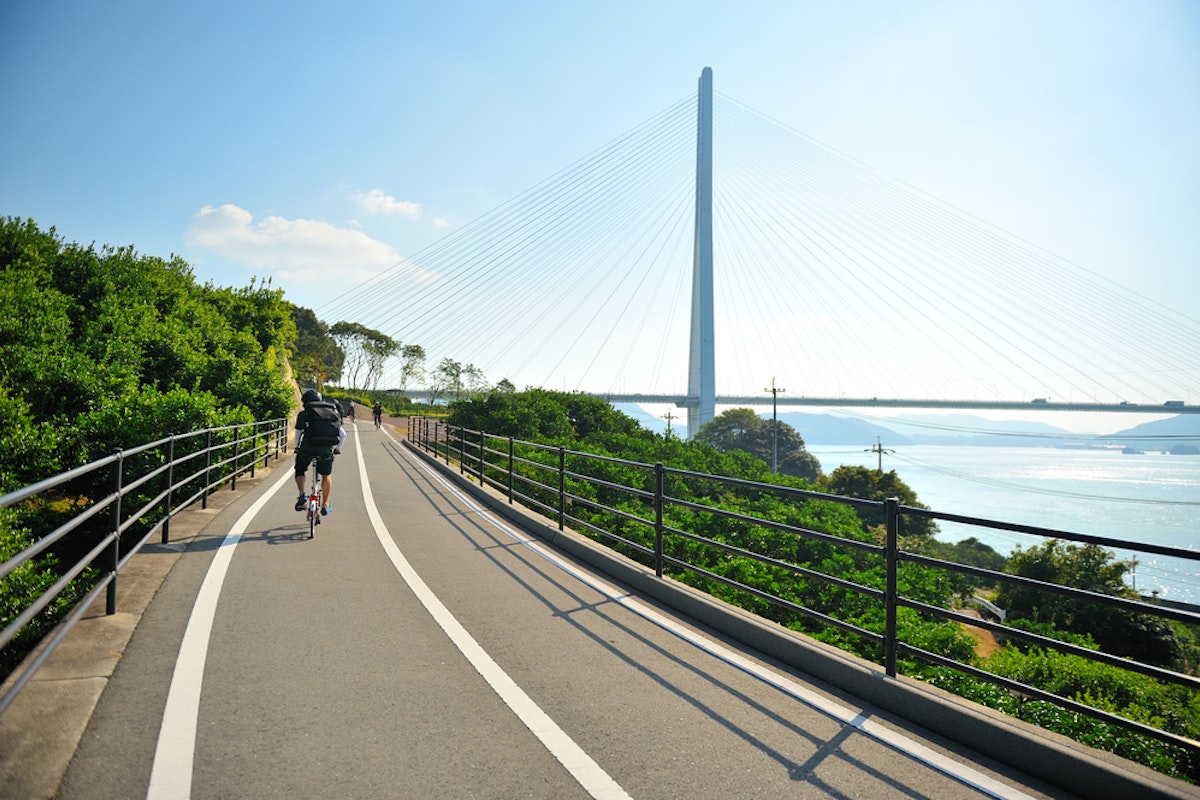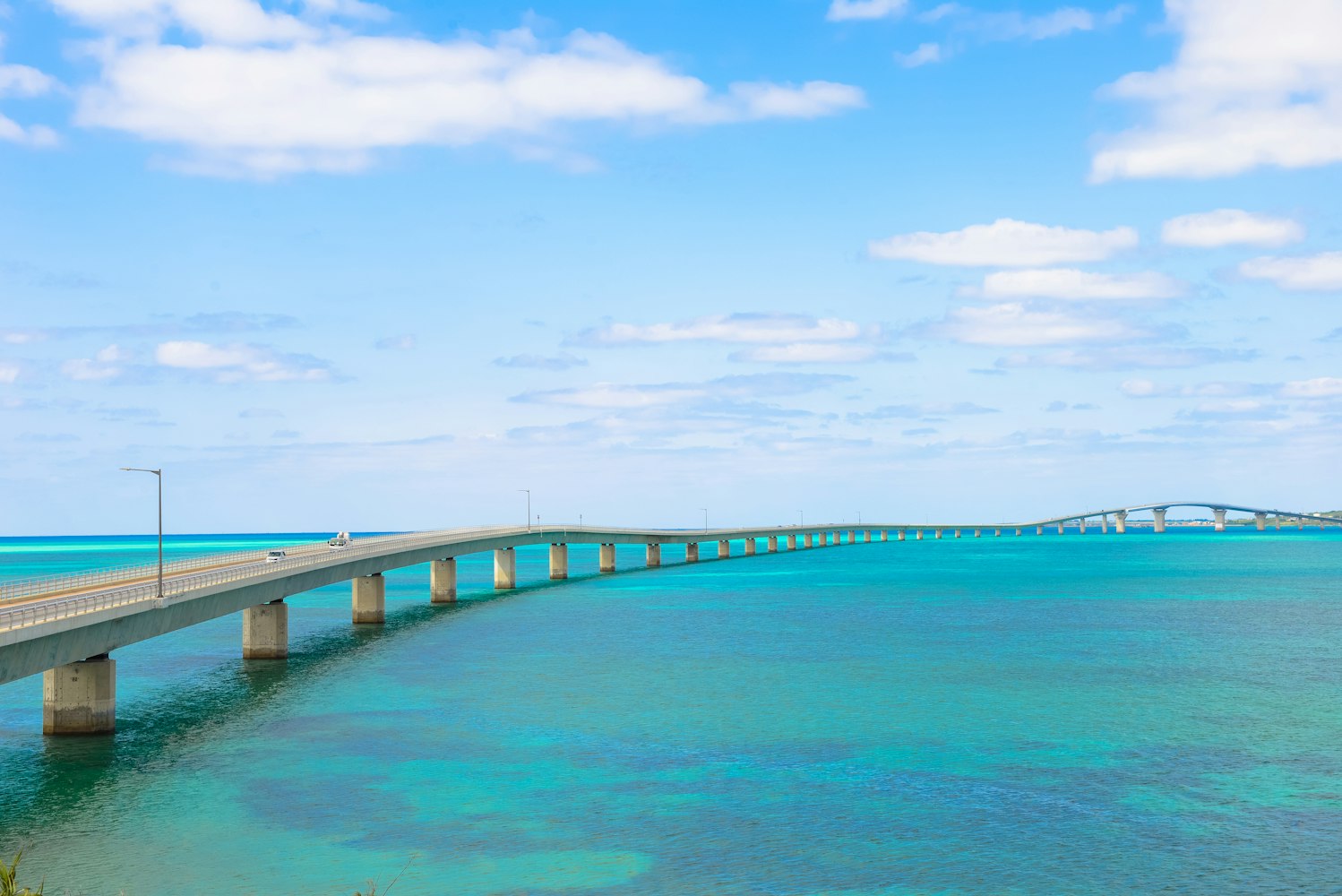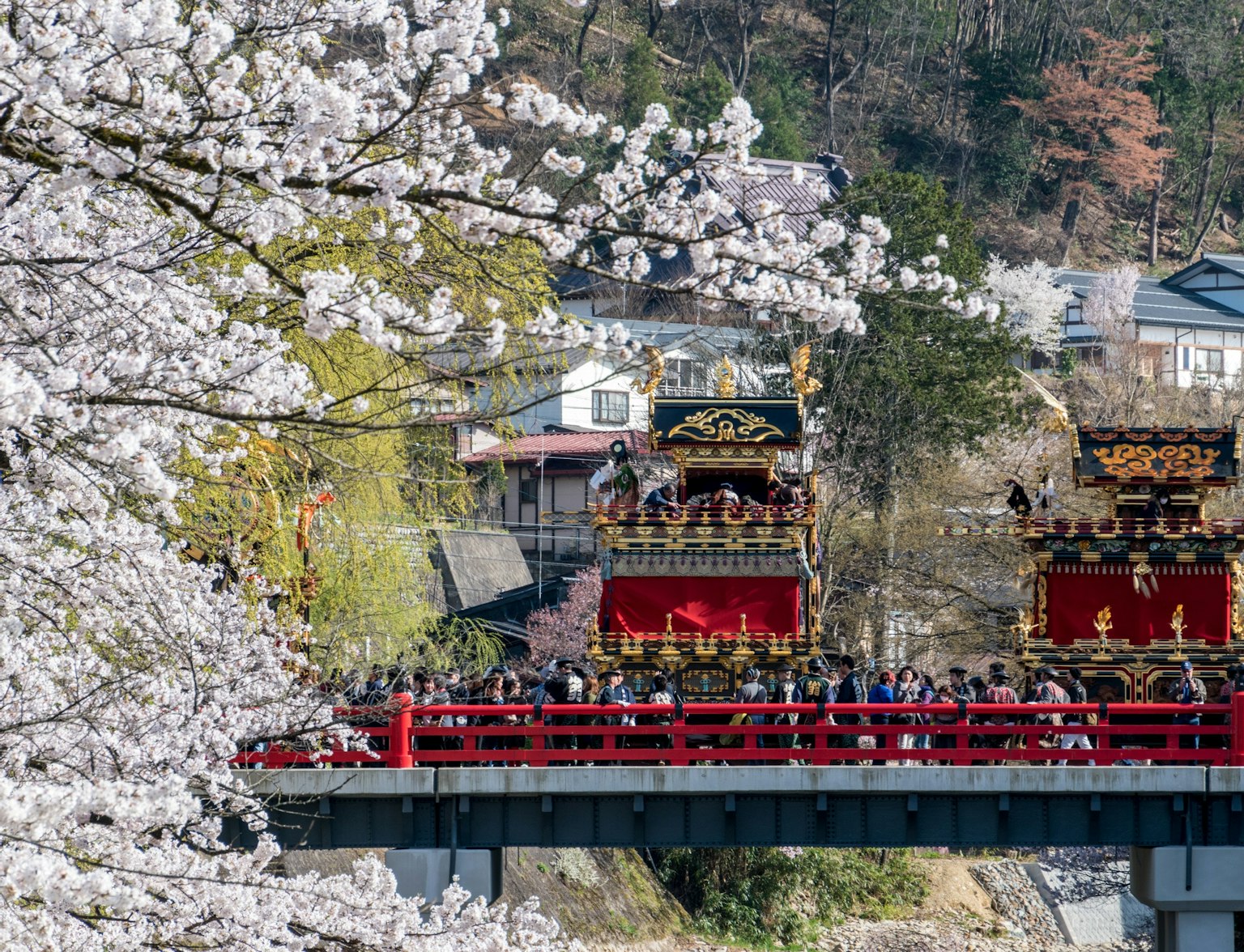

Japan is known for its deep history and modern technology, but it's also one of the best places in the world for cycling. With smooth, well-marked bike paths and great support for riders of all levels, it's a dream destination for cyclists. You’ll find plenty of bike rental spots and repair shops, making it easy to explore without any hassle.
Japan has around 1,200 kilometers of dedicated cycling routes, showing how much the country values eco-friendly and healthy ways to travel. The scenery is truly amazing—from island-hopping across the Shimanami Kaido to riding through the historic Nakasendo Route once used by samurai.
Cycling in Japan isn’t just about riding a bike. It’s a chance to enjoy nature, learn about the culture, and try delicious local food. Whether you’re just starting out or an experienced cyclist, biking in Japan offers unforgettable views and a real connection to the country’s beauty and spirit.
Shimanami Kaido, known as the ultimate cycling route in Japan, offers an extraordinary experience for island-hoppers. Stretching about 70 kilometers, this spectacular route connects Japan's main island of Honshu to Shikoku, weaving through six small islands in the Seto Inland Sea.
It's renowned for its smooth cycling road and breathtaking panoramas of the ocean, mountains, and intricate bridges, like the iconic Kurushima-Kaikyo Bridge, the world's longest suspension bridge. The route is a haven for cyclists, with dedicated bike lanes, rental stations, and cyclist-friendly accommodations, making it accessible for riders of all levels.
The Shimanami Kaido is also famous for bike touring, attracting novice and experienced cyclists. Cycling the Shimanami Kaido is a journey through diverse landscapes and cultural encounters.

Along the route, cyclists are treated to citrus-scented air in the Ehime Prefecture, known for its mikan (mandarin oranges), and opportunities to indulge in local delicacies like the Sea Bream Sushi of the Hiroshima Prefecture. Each island offers a unique charm, from the artistic haven of Ikuchijima Island with its celebrated Hirayama Ikuo Museum of Art to the historic Murakami Suigun Castle on Oshima Island.
The route, trendy during spring and fall for its mild weather, allows cyclists to engage with Japan's rich history and stunning natural beauty in a deeply personal way. Shimanami Kaido stands out as a premier cycling destination in Japan, whether for a one-day whirlwind tour or a leisurely multi-day exploration.

Embark on a captivating journey through the scenic Shimanami Kaido.
The Noto Peninsula, jutting into the Sea of Japan, presents one of Japan's most scenic cycling routes, known for its rugged coastline, quaint fishing villages, and verdant rice fields. This less-traveled region offers a serene escape, with routes well-suited for cyclists seeking tranquility and nature's raw beauty.
The peninsula is famous for its coastal views, particularly the striking sight of the terraced rice fields of Senmaida, which seem to cascade into the sea. Cyclists often share the road with few others, allowing for an intimate experience with the landscape.
Additionally, the forest roads in the Noto Peninsula offer scenic and tranquil pathways perfect for cycling adventures. Cycling through the Noto Peninsula also provides cultural immersion.

Along the route, cyclists encounter traditional crafts, age-old salt-farming methods, and the opportunity to savor freshly caught seafood, a testament to the region's rich maritime heritage. Highlights include the Wajima Morning Market, where local crafts and fresh produce create a vibrant mosaic of community life, and the ancient villages of Gokayama and Shirakawa-go, UNESCO World Heritage sites renowned for their traditional gassho-zukuri farmhouses.
The peninsula's coastal cycling road invites riders to explore leisurely, taking in a region's sights, sounds, and tastes where Japan's age-old traditions thrive against stunning natural beauty.

Embark on a thrilling one-day private tour to the World Heritage Site of Shirakawa-go.
Cycling around the iconic Mount Fuji is an experience that offers awe-inspiring views and challenging terrains that attract cyclists worldwide. As Japan's highest peak, this sacred mountain is surrounded by five beautiful lakes, lush forests, and serene shrines, making the cycling routes here some of the most scenic in Japan.
The area boasts a variety of routes suitable for all skill levels, from leisurely trails around the lakes to more rigorous paths uphill. The Fuji Five Lakes (Fujigoko) area is trendy, providing panoramic views of the mountain's majestic summit, which is exceptionally breathtaking during the cherry blossom season in spring and when autumn colors peak.
For those seeking immersive experiences, a bike tour of Japan offers specialized guidance and a deep dive into the local culture and landscapes. Cycling at the base of Mount Fuji isn't just about physical activity; it's a spiritual journey through a landscape steeped in cultural and religious significance.

Along the route, cyclists can explore historical sites such as the Fujisan Hongu Sengen Taisha Shrine, dedicated to the mountain's deity, or take a refreshing break at one of the many traditional onsen (hot springs) after a long day's ride. The mountain's surroundings are also rich in culinary delights, offering opportunities to refuel with local specialties like Houtou noodles, a regional dish served in a flavorful miso-based broth.

Rent a bike and explore Shizuoka with Mt. Fuji views.
Kyoto's Arashiyama District is a treasure trove of natural beauty and traditional Japanese culture, making it one of Japan's most enchanting cycling routes. Located in the western part of Kyoto, Arashiyama is renowned for its towering bamboo groves, offering cyclists a surreal ride through green tunnels stretching into another world.
The paths are generally flat and well-maintained, suitable for cyclists of all ages and abilities. The district blooms in splendor during the cherry blossom season and turns vibrant shades of crimson and gold in the fall, providing a visually stunning backdrop for a day's ride.
Additionally, cycling tours in the Arashiyama District offer guided and self-guided options for exploring this beautiful area. But there's more to Arashiyama than its famous bamboo groves.

Cycling in this historic district allows for easy exploration of ancient temples, with the UNESCO World Heritage Site Tenryu-ji Temple, known for its stunning landscape garden, being a top destination. Along the route, cyclists can also discover the scenic beauty of the Katsura River, particularly on the Togetsukyo Bridge, which offers a panoramic view of the river against the mountains.
Traditional craft shops, centuries-old tea houses, and restaurants serving kaiseki ryori (conventional multi-course meals) and other local delicacies line the streets, offering a deep dive into Kyoto's rich cultural heritage.

Explore the majestic sights of Arashiyama in Kyoto.
Hokkaido, Japan's northernmost island, is a haven for cyclists seeking the wild beauty of untamed landscapes and the comfort of well-maintained cycling paths. The island's diverse terrain, from its volcanic areas and vast fields of wildflowers to the dramatic coastline and serene lakes, offers some of the best cycling routes in Japan.
The region is particularly renowned for its panoramic vistas, with routes like the expansive Patchwork Road and the flower-laden Shikisai-no-Oka providing cyclists with unforgettable views. Unlike the rest of Japan, Hokkaido enjoys cool summers, making it an ideal location for cycling, especially from June to September when the landscape bursts into a kaleidoscope of colors.
Additionally, Hokkaido features national cycle routes that enhance the cycling experience with their safety features, bike rentals, and support stations. Cycling in Hokkaido is more than just a visual feast; it's an immersive experience in the heart of Japan's wilderness.

Along the route, cyclists will find opportunities for unique wildlife sightings, including the famous red-crowned cranes in Kushiro Marsh and the chance to indulge in the region's fresh culinary delights, like the sought-after Hokkaido seafood and dairy products. The island's hot springs (onsen) also offer a refreshing end to a day of cycling.
For those looking for a cultural experience, the indigenous Ainu culture can be explored through museums and heritage sites scattered across the island. With its wide roads, minimal traffic, and raw scenic beauty, Hokkaido is a premier destination for cyclists seeking tranquility, challenge, and immersion in nature's wonders.

Explore the natural sights of Hakodate.
Embarking on the Nakasendo Trail by bike is not just a cycling trip; it's a journey through time. This historic route, used since the Edo period, connects Kyoto to Edo (modern-day Tokyo) and offers cyclists a unique glimpse into Japan's rich past.
As you ride, you'll encounter post towns that have stood the test of time. Here, you can see traditional Japanese architecture and experience the hospitality the country is known for.
The trail is a way to connect with history on a deeper level, winding through scenic mountains, lush forests, and rural settings that are a far cry from the hustle and bustle of Japan's modern cities. National cycling routes are essential for exploring Japan's countryside, promoting cycling tourism and recreational biking.

Cycling the Nakasendo is a challenge that rewards you with breathtaking views and a profound sense of accomplishment. The road is steeped in history, and you must see a few key spots.
One such place is the picturesque town of Magome, with its preserved Edo-period buildings and cobblestone streets. Tsumago is another must-visit post town known for its dedication to historic preservation.
Here, signs of modernity, such as power lines, are hidden to maintain the Edo period atmosphere. The trail isn't just a great ride; it's a cultural immersion.

Slip through time and visit the Japan of 400 years ago!
The Seto Inland Sea Circuit presents an enchanting escape where cyclists can bask in the coastal beauty, island landscapes, and soothing sea breezes unique to this part of Japan. Known for its calm waters with nearly 3,000 islands, the Seto Inland Sea is Japan's most immense inland sea and a stunning location for cycling enthusiasts.
As you navigate this charming route, you will see a wealth of panoramic views, from tranquil seascapes to rolling hills, not to mention the spectacular sunsets that paint the sky in hues of orange and purple. The mild climate year-round makes it a favorable spot for cycling, with spring and autumn providing enjoyable temperatures.
Additionally, the national cycle route in the Seto Inland Sea is scenic and accessible, making it ideal for sightseeing and enjoying Japan's diverse landscapes. Cycling the Seto Inland Sea Circuit isn't just a visual delight; it's a chance to immerse yourself in the cultural tapestry of the island communities.

Each island has its unique history, traditions, and culinary specialties. A great place to explore is the art-laden Naoshima Island, where modern art installations starkly contrast traditional fishing villages.
Cyclists are encouraged to ride leisurely, allowing for spontaneous detours to hidden beaches, local eateries, and historic sites.

Embark on an unforgettable journey to Japan's hidden gem of contemporary art.
Okinawa, Japan's southernmost prefecture, offers cyclists an exotic adventure. Known for its distinct culture, subtropical climate, and vivid natural beauty, Okinawa's cycling routes are a paradise for those seeking relaxation and discovery.
The islands are home to magnificent beaches with crystal-clear waters, coral reefs, and a colorful array of marine life, providing a stunning backdrop for cyclists. The tropical trails here are a world away from Japan's bustling urban landscapes, offering a serene environment where you can ride at your own pace, breathe in the fresh sea air, and stop by hidden coves for a refreshing swim.
Additionally, cyclists can enjoy scenic river paths that offer an enjoyable alternative to busier roads, allowing exploration of the countryside with minimal vehicle interference. But Okinawa is not just about natural allure; it's a treasure trove of cultural gems.

The region has a rich history and a unique cultural identity, evident in its customs, food, and architecture. While cycling, you will encounter various historical sites, including the majestic Shuri Castle, a UNESCO World Heritage site, and witness the traditional Ryukyu dance performances.
The local cuisine, with staples like goya champuru (bitter melon stir-fry) and umibudo (sea grapes), is also a must-try for every visitor.

Discover the underwater world of Okinawa after cycling.
Venturing into the heart of the Japanese Alps, cyclists are greeted with a landscape that defies the ordinary. The Hida-Takayama area, often called the "Little Kyoto" of the mountains, is the gateway to these alpine wonders.
The ride here is challenging, with steep climbs and winding paths. However, the reward is unparalleled: panoramic vistas of rugged peaks, expansive valleys, and the occasional glimpse of wild monkeys or deer.
As the seasons change, so does the canvas of the mountains, with cherry blossoms or verdant greenery in spring and summer and fiery hues in autumn, all set against a backdrop of snow-capped peaks. It's a dynamic setting that constantly reinvents itself, offering cyclists a fresh experience with every visit.

Beyond its natural grandeur, the Hida-Takayama region is rich in cultural experiences. The area is famed for its well-preserved Edo-period streets, which beckon cyclists to take a leisurely detour and immerse themselves in the bygone era.
Traditional thatched-roof houses, known as gassho-zukuri, create a picturesque scene, while local artisans showcase skills inherited from centuries past, such as Hida woodworking. A stop at an onsen (hot spring) is necessary for relaxation after a day's ride. The local cuisine, featuring Hida beef and mountain vegetables, nourishes every traveler.

Explore the natural beauty of Takayama with a Hot Spring and Onsen tour.
The Kibi Plain offers a serene escape, where history whispers from ancient structures, and the idyllic countryside stretches as far as the eye can see. This cycling route is a gentle journey through time, ideal for those who want to immerse themselves in Japan's rich past while enjoying the peaceful present.
As you ride along the well-maintained paths, you'll encounter key historical sites that each tell a piece of Japan's storied history. The Kibitsu Shrine, for instance, is not just an architectural marvel; it's steeped in folklore and a testament to the region's spiritual heritage.

Cycling the Kibi Plain is as much about the journey as the destinations. The path takes you through rice fields shimmer in the sun, past charming farmhouses, and along quiet roads inviting reflection.
It is where you can see the rural side of Japan, which is undisturbed and authentic. Along the route, local farmers work their fields, and the simplicity of life here is a balm to the soul.
Seasonal changes bestow the landscape with different charms – cherry blossoms create a pink canopy in spring, while autumn brings a golden hue to the rice fields. For a truly immersive experience, stop at a local guesthouse, where you can savor home-cooked meals and warm hospitality.
The Kibi Plain is more than a cycling route; it's a pathway to the heart of Japan.
Deciding on the best times of the year for cycling trips in Japan requires considering the country's distinct seasonal changes, each offering its unique charm and challenges. Spring (March to May) is arguably the most picturesque season, as cherry blossoms (sakura) create breathtaking sceneries, particularly along the cycling routes in Kyoto and Tokyo.
The weather is comfortably cool, neither too cold nor too hot, making it ideal for cycling. Autumn (September to November) is equally captivating, with fall foliage transforming cycling routes into vibrant red, orange, and yellow tapestries, particularly noticeable in routes around Lake Biwa and the Alps of Japan.
Both seasons feature stable weather, with less rainfall than the early summer months, offering clear views of landmarks like Mount Fuji. Additionally, effective route planning to avoid main roads and use smaller, less trafficked alternatives can ensure a better cycling experience.
Japan's summer (June to August) can be humid and hot. Still, it's a popular time for cycling trips among those who are prepared for the conditions, especially in the northern regions like Hokkaido, where temperatures are more moderate.
The summer months are lively, with numerous festivals and fireworks displays, providing a cultural feast for cyclists. On the other hand, Winter (December to February) is challenging due to cold temperatures and snow, particularly in northern Japan.
However, the southern parts, such as Okinawa, remain relatively mild and are suitable for cycling year-round. Regardless of the season, cyclists must be prepared with the necessary gear and stay informed about the weather conditions along the cycling road they plan to explore.
Road Regulations: In Japan, cyclists must ride on the left, use lights after dark, and avoid using umbrellas or phones while riding. Helmets aren't mandatory but are strongly recommended for safety.
Seasonal Gear: Japan's diverse climate demands appropriate attire. Lightweight, breathable fabrics are best for humid summers, while moisture-wicking layers are essential during the cold winters, especially in regions like Hokkaido.
Rentals and Services: Japan offers extensive bike rental services, especially near popular routes. For instance, the Shimanami Kaido offers 14 rental terminals with over 1,000 bicycles available. Remember, reservations are recommended during peak seasons.
Navigation Tools: While cycling routes in Japan are well-marked, having a GPS or smartphone with relevant apps can help navigate rural areas or explore off-the-beaten-path destinations. Offline map apps are beneficial due to the country's sometimes spotty rural internet coverage.
Cultural Etiquette: Politeness is paramount in Japan. For instance, excessive bell ringing can be considered rude. It's customary to bow slightly when thanking someone, even at convenience stores, which are frequent along urban cycling routes and offer various services from snacks to restrooms.
Safety Measures: Japan is generally safe, but it's wise to know local emergency numbers (110 for police, 119 for fire and medical emergencies) and have travel insurance. Carry a basic first-aid kit for minor road incidents.
As we've journeyed together through the breathtaking vistas of Japan's most scenic cycling routes, from the awe-inspiring mountain paths to tranquil coastal trails and the serene beauty of rural landscapes, it's clear that Japan offers a truly unique and diverse cycling experience. Each route holds its charm, presenting cyclists with a rich tapestry of the country's natural and cultural heritage.
But reading about these incredible journeys is just the beginning – experiencing them on two wheels is an adventure you'll never forget. At TripToJapan, we specialize in curating unforgettable cycling adventures that dive deep into the heart and soul of this beautiful land.
We understand that a true adventure involves seeing the sights and engaging with the history, people, and culture most authentically. Our tours are designed to immerse you fully in each unique locale, offering an experience you won't find anywhere else.
So, are you ready to embark on the journey of a lifetime? Book your cycling tour with TripToJapan today, and prepare to be enchanted by Japan's landscapes, stories, and hospitality. See you on the trail!

Embark on an e-bike adventure through Hiroshima, guided by a local expert.



